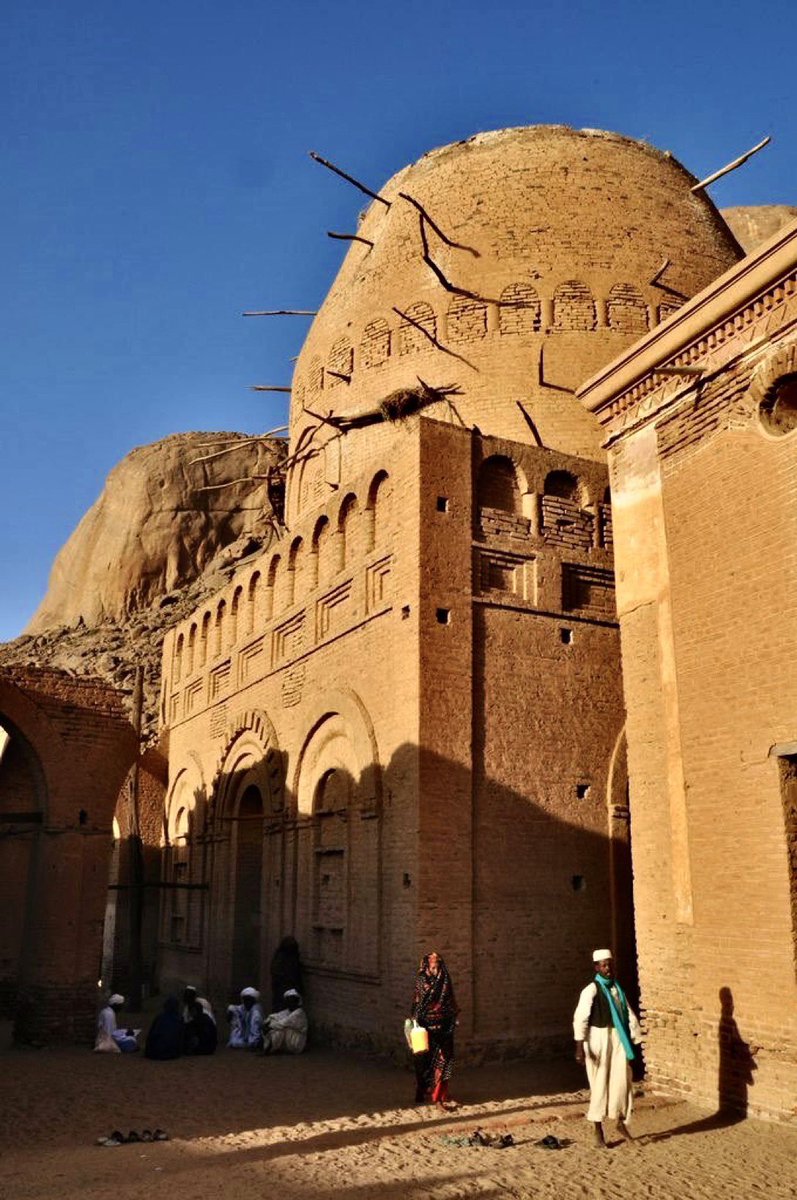In the Islamic holy book, the Qur’an a chapter is dedicated to the bee, called An-Nahl. This literally translates to ‘The Bee’ & it describes the bee’s way of life, & how Muslims should be more like them.
For #WorldBeeDay we are celebrating the bee in Islam 🐝
A thread…
For #WorldBeeDay we are celebrating the bee in Islam 🐝
A thread…

1/ Al Nahl, Chapter 16, 68-69, talks about a variety of topics, but Allah specifically chose the title The Bee to catch the attention of the readers. Bees are said to be Allah’s miracles; the way they function and how they behave, are to be held as an example #WorldBeeDay 

2/ The significance of Al Nahl as Chapter 16 is important. The only verse in this chapter that mentions bees is made up of 16 words & 16 different Arabic letters. Coincidentally, female bees have 16 pairs of chromosomes, whereas males have 16 chromosomes #WorldBeeDay 

3/ "And your Lord inspired to the bee, 'Take for yourself among the mountains, houses, and among the trees and [in] that which they construct. Then eat from all the fruits and follow the ways of your Lord laid down [for you].' There emerges from their bellies a drink, varying in… twitter.com/i/web/status/1… 

4/ This verse highlights the miraculous nature of bees and the production of honey, which is described as a healing drink for humankind. It serves as a reminder of the wisdom and purpose behind Allah's creation and His provision for His creation #WorldBeeDay 

5/ What is fascinating about the bees in the Qur’an is that it was written from a scientific standpoint where the colony, roles & practices of bees are observed. These characteristics & traits were used as a figure of speech for the follower reading the Qur’an #WorldBeeDay 

6/ In Surah Al Nahl, Allah is asks people to “give thought” to the attributes of the bees & embody these traits in their lives. Through their behaviour, we learn things such as to gain knowledge & reflect, to care for our community & maintain good relations #WorldBeeDay 

7/ The teachings of Prophet Muhammad (PBUH) also emphasise the importance of bees. He reportedly said, "The example of a believer is like that of a bee, it eats clean food and produces clean honey. And when it lands on something, it does not break or ruin it." #WorldBeeDay 

8/ This hadith (narration) illustrates the significance of cleanliness and productivity in a Muslim's life, drawing a parallel between the behavior of bees and the conduct of a Muslim. #WorldBeeDay 

9/ Furthermore, Islamic teachings encourage the protection and preservation of bees and their habitats. Islam promotes environmental stewardship and prohibits the destruction of nature without just cause. #WorldBeeDay 

10/ Bees, as essential pollinators, play a crucial role in maintaining ecological balance and sustaining plant life, which is why their preservation aligns with Islamic principles of conservation and respect for Allah's creation. #WorldBeeDay 

11/ Approximately a third of all the food we eat is due to pollination from the honeybee. Unfortunately, due to habitat loss, pollution, pesticides & disease, their numbers have dwindled. Over the last decade, there has been a rise in colony collapse disorder #WorldBeeDay 

12/ If bees disappeared from the surface of the Earth, humans would have 4 years left to live. The bee has officially been declared the most important animal on Earth by the Earthwatch Institute in 2017 #WorldBeeDay 

13/ In the scientific language all the honeybees belong to the genus Apis. The honeybee communicates with other honeybee using a dance language, which scientists have discovered to be very complicated and highly developed #WorldBeeDay 

14/ Surah an-Nahl, 16. Pages from an early Ottoman Qur'an written in two different script styles, 16th century The right hand page starts with part of verse 110 from Surah an-Nahl (The Bee) and continues through to verse 122 on the left hand page #WorldBeeDay 

15/ Since 2011 the East London Mosque @elondonmosque in England has been home to several beehives. Most of the hives are kept on the roof of the London Muslim Centre #WorldBeeDay
(Khalil and Salma inspecting a hive. Pic: Jessica Chia)
(Khalil and Salma inspecting a hive. Pic: Jessica Chia)

16/ This is a look around the observation hives at the East London Mosque @elondonmosque where you get a feel of beekeeping in the mosque.
Repost from @Bushwoodbees
Repost from @Bushwoodbees
17/ Here is a wonderful video from @BBCNews about the amazing bees at the East London Mosque
bbc.co.uk/news/av/uk-eng…
#WorldBeeDay
bbc.co.uk/news/av/uk-eng…
#WorldBeeDay
• • •
Missing some Tweet in this thread? You can try to
force a refresh

 Read on Twitter
Read on Twitter





















